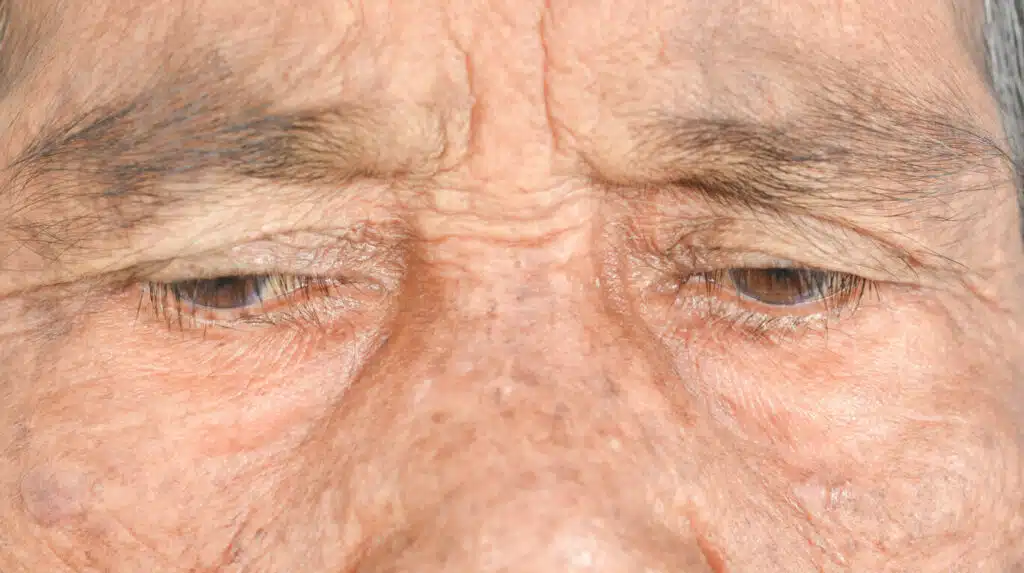
Age-related macular degeneration (AMD) is an eye condition that damages the macula, the part of your retina responsible for sharp central vision. Wet age-related macular degeneration and dry AMD affect the same part of your eye but progress differently. Early detection makes a significant difference in preserving your vision.
Knowing which type you might have guides treatment decisions and helps you understand what to expect. Let us explore the two types of age-related macular degeneration and where you can go to seek eye care for AMD.
Understanding Age-Related Macular Degeneration
Age-related macular degeneration is the leading cause of vision loss in people over 65. The condition affects approximately 2.1 million Americans, according to the American Academy of Ophthalmology. This number is expected to double by 2050 as the population ages.
The macula sits in the center of your retina and contains millions of light-sensing cells. These cells convert light into electrical signals that your brain interprets as images. When AMD damages these cells, you lose central vision while peripheral vision typically remains intact.
AMD develops in two main forms: dry and wet. About 85% to 90% of people with AMD have the dry form, while 10% to 15% have wet AMD. Despite being less common, wet AMD causes about 90% of severe vision loss from this condition.
Dry Age-Related Macular Degeneration
Dry AMD develops gradually and progresses through three stages: early, intermediate, and advanced. This form occurs when yellow deposits called drusen accumulate under the retina. Small amounts of drusen may not affect vision, but larger or more numerous drusen can distort or dim vision.
Early Stage Dry AMD
Most people have no symptoms during early dry AMD. Your eye doctor might detect medium-sized drusen during routine eye exams. At this stage, vision typically remains normal, making regular eye exams crucial for early detection.
Intermediate Stage Dry AMD
Intermediate dry AMD may cause some vision changes. You might notice slight blurriness or need more light when reading. Some people develop blind spots in their central vision. Large drusen or pigment changes in the retina characterize this stage.
Advanced Stage Dry AMD
Advanced dry AMD, also called geographic atrophy, causes significant vision loss. Light-sensitive cells in the macula break down, creating enlarged blind spots. This progression can take many years, and not everyone with early or intermediate AMD develops the advanced form.
Dry Macular Degeneration Treatment
Currently, no cure exists for dry AMD, but treatments can slow progression. The National Eye Institute study found that specific vitamins and minerals reduce the risk of advanced AMD by about 25%. These supplements include vitamin C, vitamin E, zinc, copper, and lutein.
Lifestyle changes also help slow the progression of dry AMD. Eating leafy green vegetables, exercising regularly, and avoiding smoking protect your retinal health. Wearing sunglasses that block ultraviolet light may also provide some protection.
Wet Age-Related Macular Degeneration
Wet AMD develops when abnormal blood vessels grow under the retina. These vessels leak blood and fluid, causing rapid vision loss. Unlike dry AMD, wet AMD can progress quickly, sometimes causing severe vision loss within days or weeks.
How Wet AMD Develops
Wet AMD typically develops from advanced dry AMD, though not everyone with dry AMD develops the wet form. The process begins when the retina does not receive adequate oxygen and nutrients. Your body responds by growing new blood vessels, but these vessels are fragile and leak easily.
This leakage causes the macula to swell and lift away from its normal position. The result is distorted or lost central vision. Straight lines may appear wavy, and a dark or blank spot may develop in your central vision.
Symptoms of Wet AMD
Wet AMD symptoms appear more suddenly than dry AMD symptoms. You might notice straight lines appearing wavy or bent. Colors may seem less bright, or you might have difficulty seeing in low light. A gray, dark, or empty area may appear in your central vision.
Some people with wet AMD experience visual distortions where objects appear different sizes when viewed with each eye separately. These symptoms require immediate medical attention, as early treatment provides the best chance of preserving vision.
Treatment for Wet AMD
Several effective treatments exist for wet age-related macular degeneration.
Anti-VEGF Injections
Anti-VEGF injections are the most common wet age-related macular degeneration treatment. These medications, including ranibizumab (Lucentis), aflibercept (Eylea), and bevacizumab (Avastin), block the growth of abnormal blood vessels.
Your ophthalmologist injects these medications directly into your eye during office visits. Most people need injections every month or two initially, with the frequency often decreasing over time. While this sounds uncomfortable, numbing drops make the procedure tolerable for most patients.
Photodynamic Therapy
Photodynamic therapy combines a light-activated drug with laser treatment. The drug, verteporfin (Visudyne), is injected into your arm and travels to the abnormal blood vessels in your eye. A special laser then activates the drug, destroying the abnormal vessels while preserving normal retinal tissue.
Laser Photocoagulation
Laser photocoagulation uses a high-energy laser beam to destroy abnormal blood vessels. This wet age-related macular degeneration treatment is less commonly used now because it can damage surrounding healthy tissue. It may be considered when abnormal blood vessels are located away from the central macula.
Wet Age-Related Macular Degeneration in Washington, MO
At Advanced Sight Center, our experienced ophthalmologists provide comprehensive macular degeneration care using the latest diagnostic technology and treatment options. We understand the impact of vision loss on your daily life and work with you to preserve your sight and maintain your independence.
Schedule your comprehensive eye exam today to protect your vision and detect any early signs of macular degeneration. Contact Advanced Sight Center today at (636) 239-1650 or fill out our appointment request form to take the first step toward preserving your precious gift of sight.




